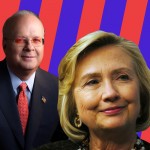The top 26 U.S. airlines generated $12.7 billion in profits last year. That is up from $98 million in 2012. These figures come from the federal government’s Bureau of Transportation Statistics, and no, that isn’t a typo. It was “B” billions last year and “M” millions in 2012. And I am thrilled to bits that the industry has recovered from the Great Recession, but the way it has done so pisses me off.
Revenue was $199.7 billion last year with $120.6 billion of that coming from collecting fares. There was also $3.3 billion in baggage fees, and $2.8 billion from reservation change fees. The Bureau doesn’t break out other fees like Wi-Fi and other on-board extras, but you don’t have to be a CPA to see there’s $79.1 billion in revenue that didn’t come from fares.
“We have every fee known to man,” said Rick Seaney, chief executive of the travel site Farecompare.com. “That tells you why there are profits now.”
Time just reported, “According to the Department of Transportation, airlines operating in the U.S. collected $797 million in baggage fees during the fourth quarter of 2013, and $3.35 billion in baggage fees for the entire year. Those are huge numbers, but they actually represent a decline from the year before: Baggage fees for the fourth quarter of 2012 totaled $823 million, while the sum for all of 2012 was $3.49 billion. In other words, the airlines took in roughly $100 million less in passenger baggage fees last year.”
In other words, the traveling public is fighting back. Like rational actors in economic theory, they are responding to market forces by altering their behavior. They pack less and travel with just a carry-on (although some airlines charge for that now). Or they book with an airline that lets you (yes, “lets” like you have their permission to do this) bring one bag for free. Or they use a certain credit card that is tied to a certain airline so that the bag travels “free” — they’ll pay for that in credit card fees and interest.
To an economist interested in efficiency, nothing could be better. The whole thing is transparent, you see the cost of everything.
To a person who remembers how flying used to be, the whole thing isn’t so much transparent as it is tacky and vulgar. I realize we probably aren’t going back to little boys wearing ties on the plane any more than we are going to dispose of metal detectors. And the complementary booze was probably never a good idea, although I once flew from New York to Montreal on Chile-based LAN Airlines (I know, it was weird) and had a whisky before take-off. I would have put up with quite a delay on the ground, I confess.
What it comes down to is this: Flying shouldn’t be the complete and unbridled misery that it has become. Getting there used to be half the fun; now, it isn’t any of the fun. There are still airlines that make flying at very least tolerable — Lufthansa, SAS, Etihad. Yes, you pay a bit more. Yes, you get a lot more.
So I am appealing to the American airline industry: Please stop telling me the fare is $99 and then adding on extras so I have to shell out $300. I will pay $350 just to call an end to the extra fees.





